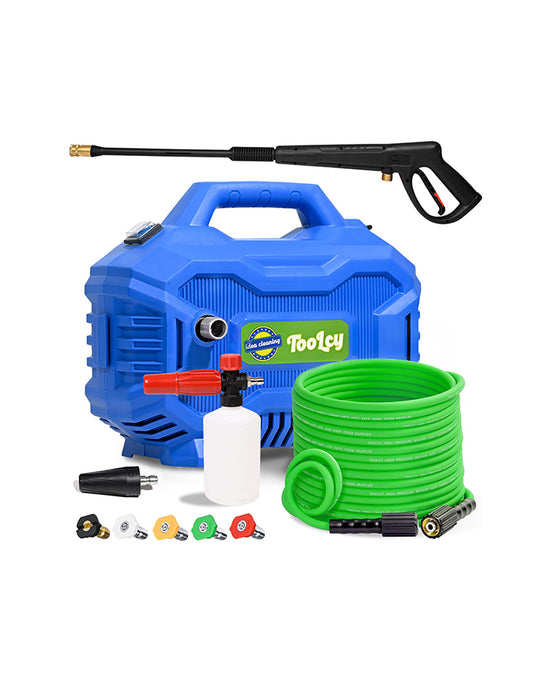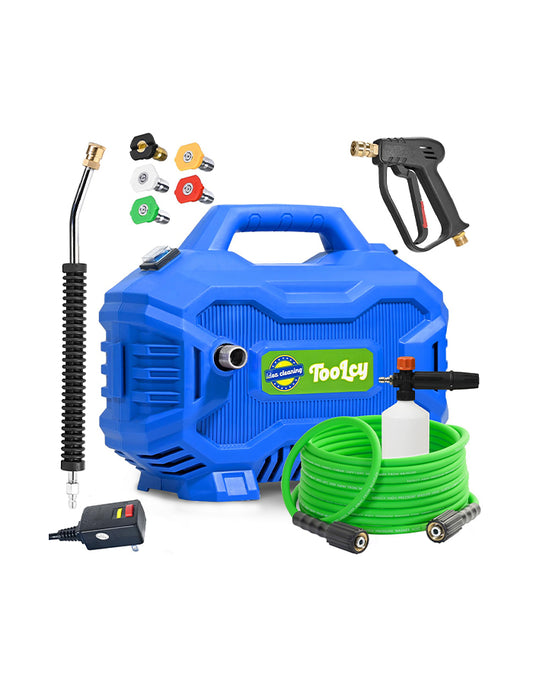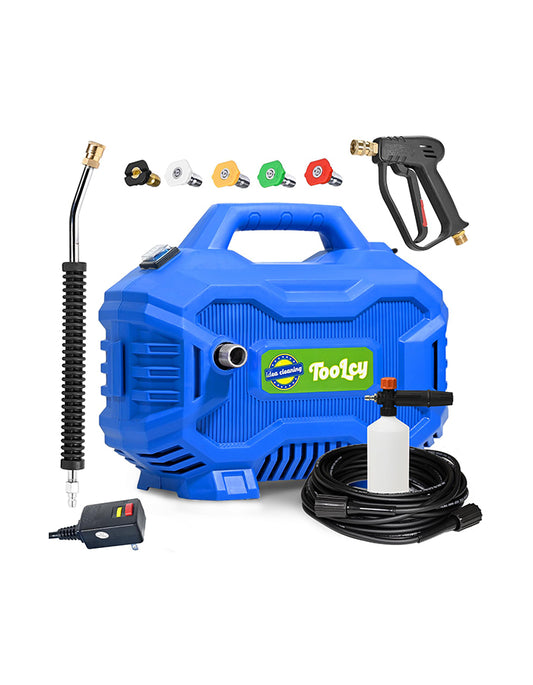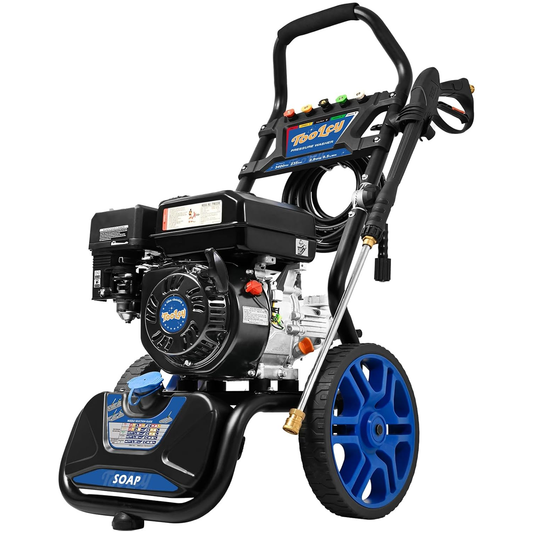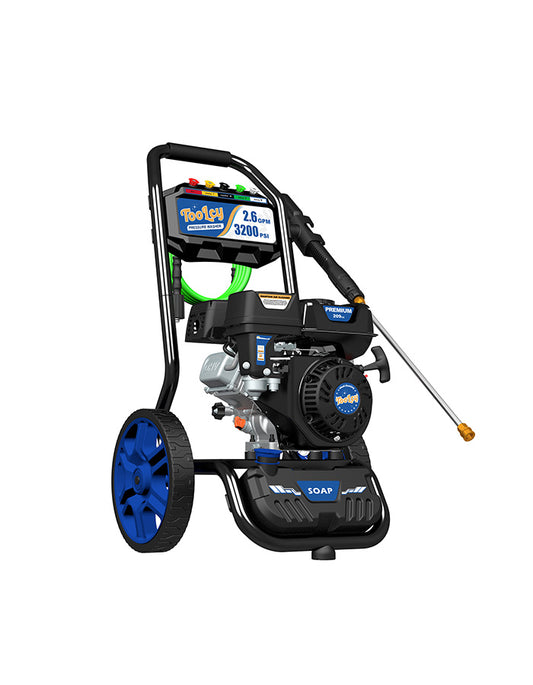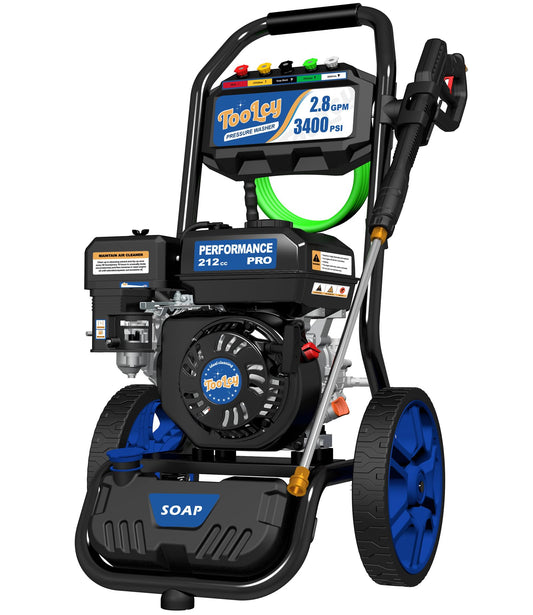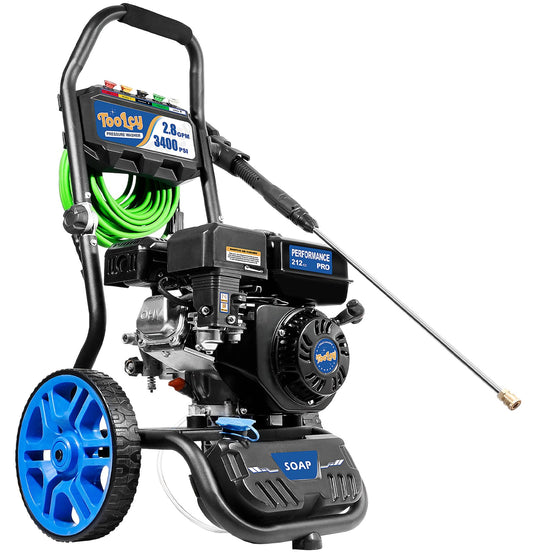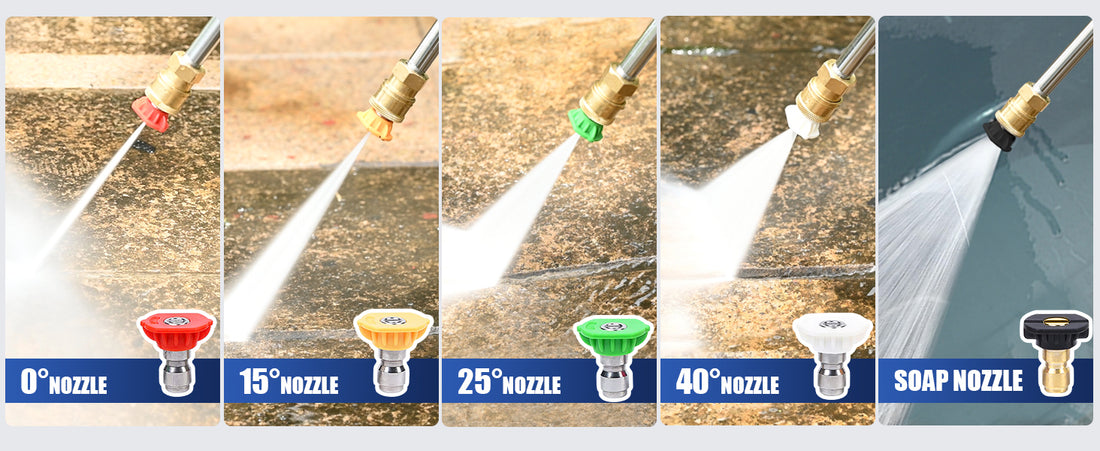
How to Select Nozzles for Different Cleaning Occasions
Share
Selecting the right nozzle for your pressure washer is key to achieving the best results, whether you're cleaning a delicate surface or tackling tough grime. The nozzle determines the angle and intensity of the water stream, so it's important to choose the right one for the task at hand. Here’s a guide to help you understand the different nozzle types and how to use them effectively for various cleaning occasions.
Understanding Pressure Washer Nozzle Types
Nozzles are typically color-coded to indicate their spray pattern and pressure. Each nozzle creates a different angle of water dispersion, impacting both cleaning power and coverage area. Here’s a breakdown of the most common nozzle types:
Red Nozzle (0-Degree): This nozzle provides a highly concentrated stream of water, delivering maximum pressure. It’s ideal for removing stubborn stains, such as grease or paint, from hard surfaces like concrete. However, use this nozzle with caution—it can easily damage softer surfaces.
Yellow Nozzle (15-Degree): The 15-degree nozzle is perfect for intense cleaning tasks that require force, such as preparing surfaces for painting, removing mildew, or cleaning tough grime from decks and driveways. The narrower spray gives strong pressure while providing enough coverage for larger surfaces.
Green Nozzle (25-Degree): This is the most versatile and commonly used nozzle. It’s great for general cleaning tasks like washing cars, patios, and outdoor furniture. The 25-degree angle provides a balance between power and coverage, making it suitable for both heavy-duty and lighter cleaning jobs.
White Nozzle (40-Degree): The 40-degree nozzle is designed for delicate surfaces. It offers a wide spray that reduces the pressure on the cleaning surface. Use this nozzle for washing windows, vehicles, and wood surfaces, where too much pressure could cause damage.
Black Nozzle (Soap Nozzle): The black nozzle is a low-pressure nozzle used primarily for applying detergent or soap. It allows the pressure washer to draw detergent from the reservoir and apply it evenly to surfaces, making it ideal for pre-soaking tasks before rinsing.
Selecting the Right Nozzle for Different Cleaning Jobs
1. Heavy-Duty Cleaning (Concrete, Brick, and Metal Surfaces)
For surfaces that can withstand high pressure, such as concrete driveways, metal railings, or brick walls, opt for the Red (0-degree) or Yellow (15-degree) nozzles. The concentrated stream from these nozzles will blast away tough grime, paint, or rust. Just be mindful of the surface type—use the 0-degree nozzle only on areas where the material is strong enough to handle the intense pressure.
2. Decks, Patios, and Wooden Surfaces
Wooden surfaces, including decks and patios, can be tricky to clean because too much pressure can damage the wood. Use the Green (25-degree) nozzle for a more controlled, even cleaning that’s powerful enough to lift dirt but gentle enough to avoid gouging the wood. For softer woods, consider switching to the White (40-degree) nozzle to further reduce the risk of damage.
3. Vehicles and Outdoor Furniture
When cleaning delicate surfaces like cars, boats, or outdoor furniture, the White (40-degree) nozzle is your best choice. The wide spray ensures that the surface is rinsed effectively without causing scratches or dents. Be cautious about the distance between the nozzle and the surface; keeping the nozzle too close can still cause damage, even at a 40-degree spray angle.
4. Windows and Screens
Cleaning windows and screens requires a gentle touch to avoid cracking or tearing. The White (40-degree) nozzle provides a gentle, wide spray that removes dirt and grime without causing damage. For an extra delicate wash, keep a greater distance between the nozzle and the glass or screen to reduce the pressure.
5. Pre-Soaking with Detergent
Before tackling tough cleaning tasks, applying detergent can help break down grease, dirt, and grime. Use the Black (Soap) nozzle for this step. Its wide, low-pressure spray allows detergent to be applied evenly across the surface. Let the soap sit for a few minutes before rinsing to ensure it has time to work.
Pro Tips for Nozzle Selection
Test Before Using: Before starting a cleaning task, always test the nozzle on a small, inconspicuous area to ensure the pressure is appropriate for the surface.
Distance Matters: The closer the nozzle is to the surface, the more intense the water pressure. Increase your distance to reduce the impact and avoid damaging sensitive areas.
Switch Nozzles for Different Stages: For best results, start by applying detergent with the Black (soap nozzle, then switch to a higher-pressure nozzle like the Green (25-degree) or White (40-degree) to rinse off the soap and dirt.
By selecting the correct nozzle for each task, you'll not only ensure the best cleaning results but also protect your surfaces from unnecessary wear and tear. Whether you're scrubbing down a driveway or gently washing your car, the right nozzle will make all the difference in your cleaning experience.
Selecting the right nozzle may seem simple, but it has a significant impact on the effectiveness of your pressure washer. If you're unsure which nozzle to use for a specific task, refer back to this guide for helpful tips on achieving the best cleaning performance while protecting your surfaces.

